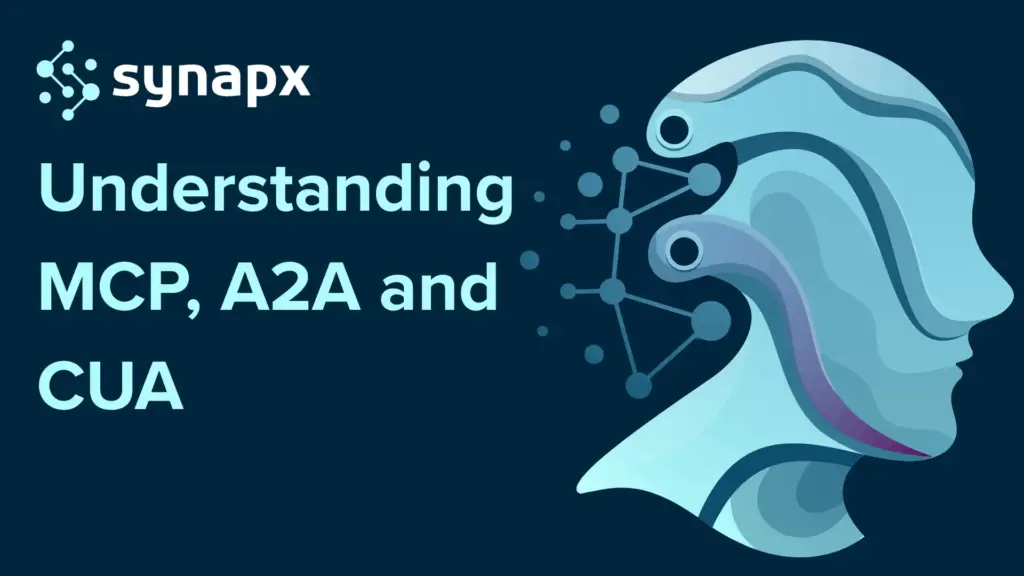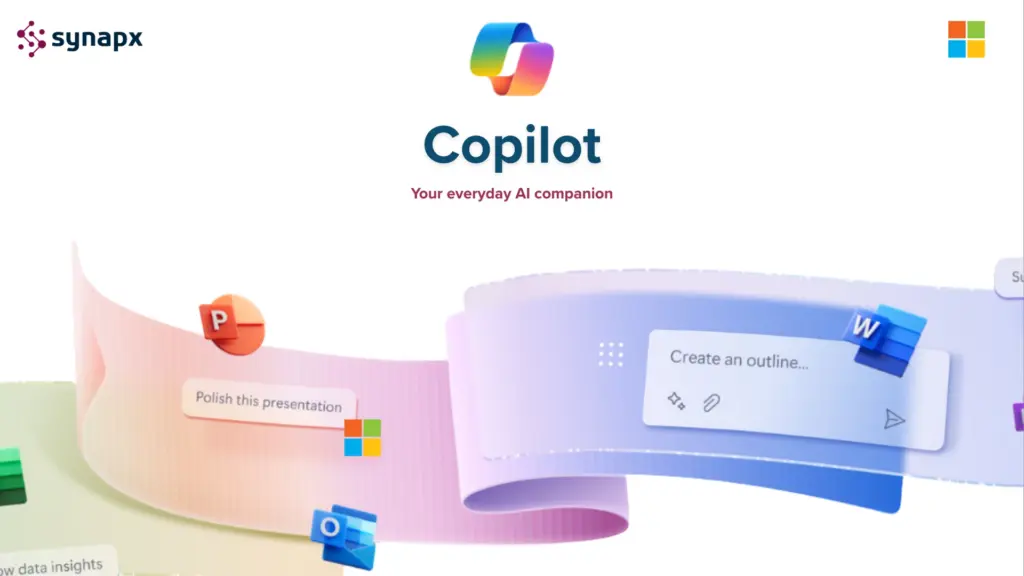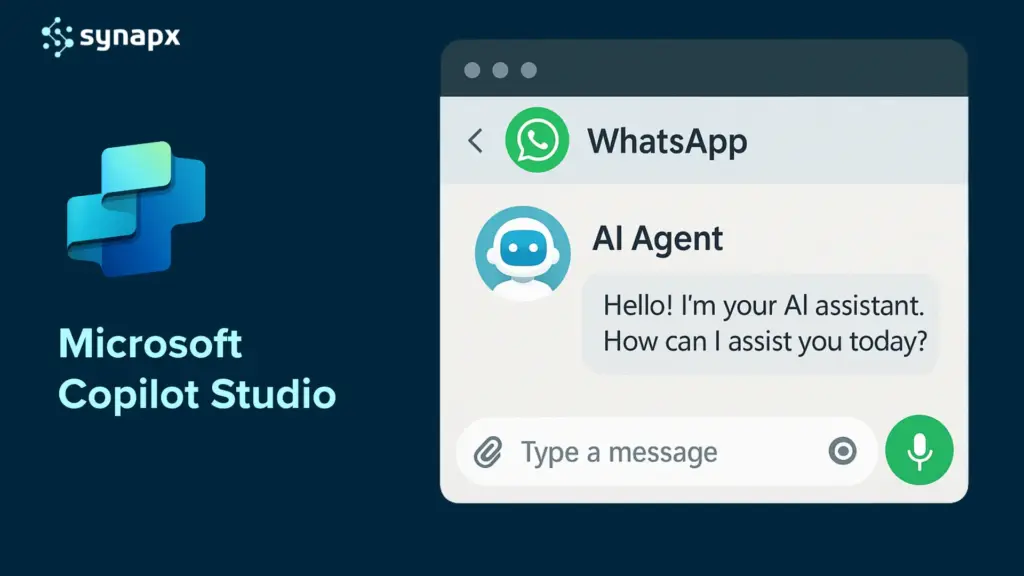Artificial Intelligence is entering a new era, one where systems no longer work in isolation but collaborate intelligently. This transformation is powered by three emerging protocols: Model Context Protocol (MCP), Agent-to-Agent (A2A) communication, and Computer Use Agents (CUA).
If your business is exploring how to scale AI or integrate Microsoft Copilot Studio into existing workflows, understanding these technologies will give you a head start.
What Are AI Agents?
AI agents are digital assistants that use intelligence to perform tasks, make decisions, and automate workflows. From answering customer questions to analysing financial data, these agents act on your behalf, individually or as a network. Microsoft’s Copilot Studio empowers organisations to create and manage these agents with ease.
But as companies develop more specialised agents, the real challenge is coordination, enabling agents to talk, share data, and collaborate securely. That’s where MCP, A2A, and CUA come into play.
Model Context Protocol (MCP): Connecting AI to Knowledge and Tools
The Model Context Protocol (MCP) acts as the bridge between large language models and enterprise data.
Think of it as a standardised interface that helps AI systems understand and use business information safely and efficiently.
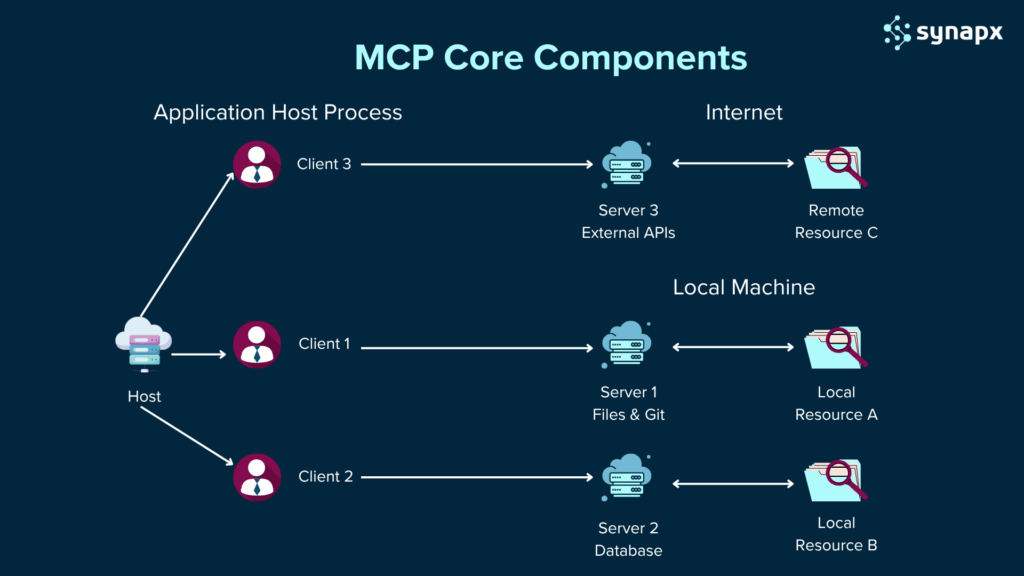
Key Features
- Unified access: Connects AI models directly to tools, APIs, and data sources.
- Standardised communication: Makes “function calling” consistent across platforms like Azure, OpenAI, and Anthropic.
- Context awareness: Keeps models updated with the latest company data.
- Secure integration: Reduces the risk of fragmented or ungoverned AI access.
Why It Matters?
MCP enables AI systems to do more than generate text – they can act within context.
For instance, a Copilot built with MCP can automatically fetch CRM data, update sales records, or trigger workflows in Power Automate.
Agent-to-Agent (A2A): Enabling AI Collaboration
If MCP is how AI connects with systems, A2A is how AI agents connect. It’s a protocol that enables agents to communicate, share insights, and collaborate on complex tasks while maintaining their independence.
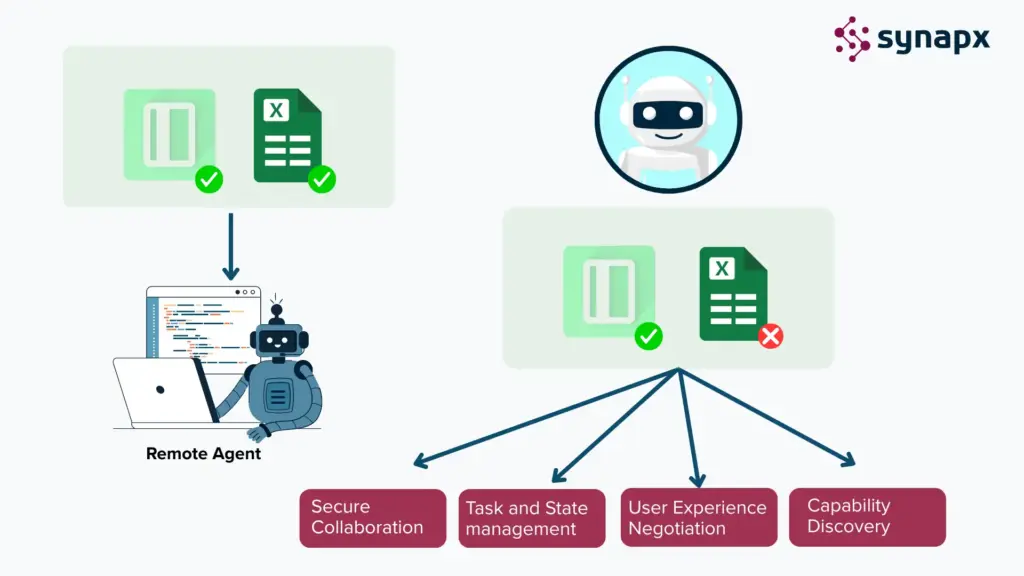
How A2A Works?
- Uses Agent Cards to identify capabilities.
- Shares multi-modal information – text, data, visuals, even audio.
- Enables secure negotiation and task sharing.
- Ensures authentication and authorisation for every interaction
Business Impact
A2A allows businesses to move from isolated bots to collaborative ecosystems. Imagine a finance agent that alerts a project tracker agent about overspending, which then signals a reporting agent to generate insights – all autonomously.
At Synapx, we design multi-agent architectures that leverage A2A to connect Copilot Studio agents with enterprise data, driving faster, smarter decisions across departments.
Computer Use Agents (CUA): Letting AI See and Act
Computer Use Agents (CUA) take automation a step further by giving AI the ability to interact with screens just like humans do. They use vision and reasoning to navigate web apps, fill forms, and complete tasks that previously required manual input.
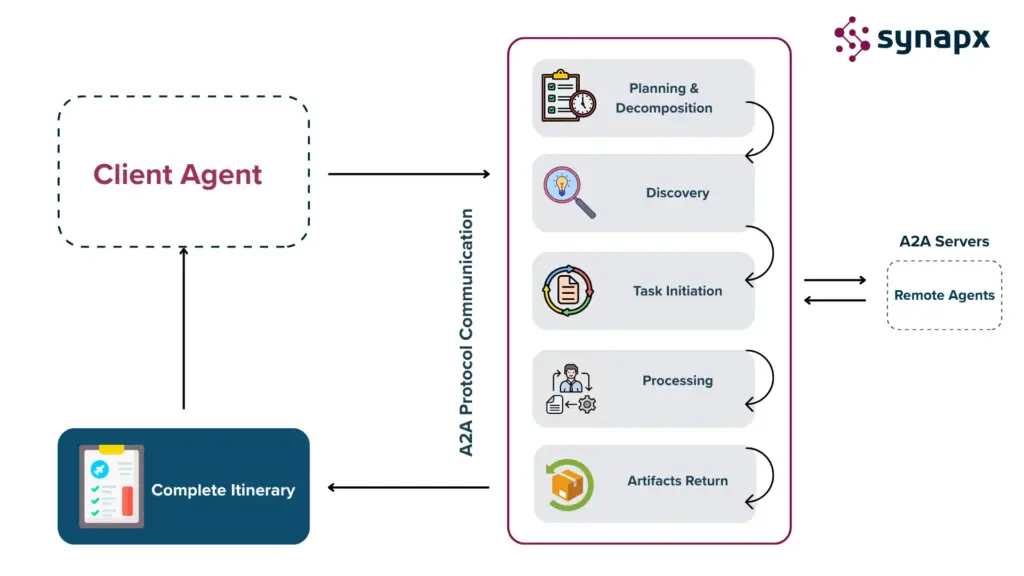
Core Capabilities
- Understand visual layouts on desktop or web applications.
- Automate data entry, reporting, or reconciliation across multiple systems.
- Adapt dynamically when UI layouts change.
- Combine multimodal inputs (text, vision, clicks) for full-spectrum automation.
Example
A CUA can log in to a supplier portal, download invoices, extract line-items into Excel, and send summaries to a manager – no coding, no human effort.
The Power of Multi-Agent Orchestration
When used together, MCP, A2A, and CUA form the foundation of next-generation intelligent automation:
| Protocol | Purpose | Example Use Case |
| MCP | Connects AI models with structured data and tools | A Copilot retrieving live ERP data |
| A2A | Enables communication between agents | Finance and HR agents collaborating on budget forecasting |
| CUA | Allows AI to interact visually with apps | AI agent processing invoices from a website |
These layers allow your digital workforce to see, think, and act, creating a fully connected AI ecosystem.
How Synapx Can Help?
At Synapx, we help businesses build and integrate Copilot Studio agents using MCP, A2A, and CUA. Our team ensures your agents communicate securely, automate intelligently, and align perfectly with your business processes. Whether you’re starting your first AI agent project or orchestrating multi-agent workflows, Synapx delivers the expertise and governance your enterprise needs.
Conclusion
AI is no longer just about automation – it’s about collaboration between intelligent systems. Protocols like MCP, A2A, and CUA are redefining how organisations build, scale, and manage AI.
Businesses that embrace this shift will see not only operational efficiency but also entirely new ways of delivering value.

